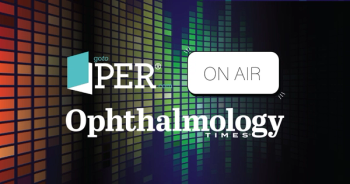
Techniques offer similar sensitivity, specificity
Fort Lauderdale, FL-Multifocal visual evoked potentials (mfVEP) and standard automated perimetry (SAP) perform in a similar manner in eyes with high-risk ocular hypertension or early glaucoma, according to a comparison study. However, agreement between the two techniques reached only 80%, suggesting that they detect different defects in some cases, said Brad Fortune, OD, PhD, associate scientist, Discoveries in Sight, Devers Eye Institute, Portland, OR.
It was shown in a 1998 study that mfVEP could be used for topographic assessment in glaucoma, Dr. Fortune said, and efforts have been ongoing since then to understand its value as a diagnostic tool better. Following up on that study, many others looked at the ability of mfVEP to detect not only glaucomatous field loss but also some suspect cases or cases of glaucomatous optic neuropathy (GON). With one exception, all of these studies showed sensitivities and specificities above 90%; that study used an older instrument.
However, these studies all had a potential flaw: visual field was used at least in part to determine the subject population. This was one of the reasons why Dr. Fortune and colleagues embarked on a comparison study of mfVEP and SAP. He discussed the results during the annual meeting of the Association for Research in Vision and Ophthalmology.
Pattern reversal mfVEPs were obtained using VERIS software and four-electrode arrays, then analyzed with custom software. SAP visual fields were obtained using the SITA-Standard threshold algorithm within 22.3 (± 27) days of the mfVEP.
Defining abnormalities
Abnormalities on the mfVEP were defined using a variety of cluster criteria, while on SAP they were defined as pattern standard deviation (PSD) p < 0.05 or glaucoma hemifield test outside normal limits, according to criteria from the Ocular Hypertension Treatment Study (OHTS).
Stereophotographs of each optic disc were taken within 19 (± 27) days of the mfVEP and graded as either GON or normal (N) in masked fashion by two independent experts. The Moorfields Regression Analysis (MRA) from the Heidelberg Retina Tomograph (HRT) was used as alternative diagnostic standard. Sensitivity for either the mfVEP or SAP was defined as the percentage of eyes with GON that had an abnormality on the functional test. Specificity was defined as the percentage of eyes that had a normal function test.
When results were analyzed, disc photos from 50% of the eyes were graded GON, and both eyes were graded GON in 38% (71) of the subjects, Dr. Fortune said. Indicative of very early glaucoma, the average SAP mean deviation was only 0.3 ± 2.1 dB, and the average PSD was 2.3 ± 1.9 dB. Using OHTS criteria, 22% of subjects had an abnormal SAP.
The proportion of all mfVEPs that were abnormal ranged from 14% to 45%, depending on the cluster criterion used. Using a criterion with a specificity of 90%, 28% of eyes (102) had an abnormal mfVEP. For criteria with specificities of 95% and 98%, 24% (88 eyes) and 14% (52 eyes), respectively, had an abnormal mfVEP.
Concordance between SAP and mfVEP ranged from 75% to 81%, again depending on the criteria.
The sensitivity of SAP to detect GON, using OHTS criteria, was 29%, and specificity was 84%. For mfVEP, sensitivity to detect GON ranged from 28% to 32% for cluster criteria between 84% and 87%.
Newsletter
Don’t miss out—get Ophthalmology Times updates on the latest clinical advancements and expert interviews, straight to your inbox.












































